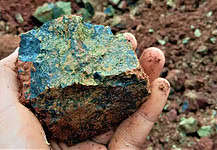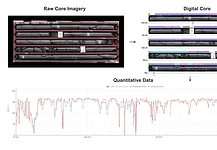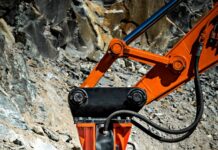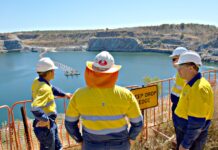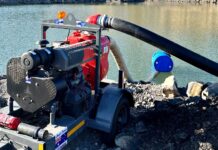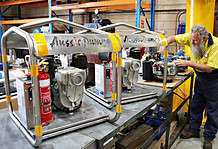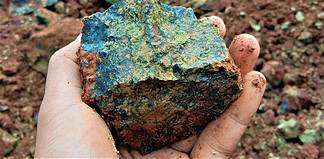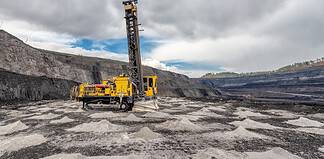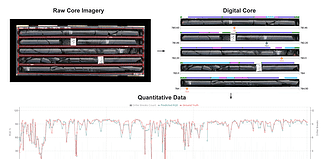Crystal Clear Asset Performance

In the digital era where everything is interconnected more than ever, maintaining a safe, reliable and compliant operation demands a holistic approach to asset management. It serves as an essential tool in achieving higher production throughput and equipment availability, reducing operational costs, meeting stakeholder and community expectations, and complying with government and environmental regulations.
The mining industry is certainly reliant on the performance of its assets – earthmoving machinery, technology, infrastructure, plant and people. Therefore, the right asset management processes must be in place in order to keep a site running like clockwork.
The increase in digital connectivity and remote controlled devices has seen an explosion in the number of data sources, and the volume of data, collected, monitored, analysed and stored within a mining operation.
As a result, asset owners are looking to external firms that offer the technology, expertise, and insight to implement effective strategies leveraging the power of data to ensure asset integrity, reliability and compliance.
Data science is one weapon in the asset management toolkit that empowers mining companies to optimise their operations, reduce costs, and increase profitability over the life of their asset.
With more than 470 years of combined experience, leading asset management company, Crystalise, is helping miners maximise their asset’s performance by providing a full suite of services from increasing reliability, assuring integrity, building and optimising maintenance to reducing mining costs.
The Australian Mining Review caught up with Crystalise Lead Asset Management & Business Intelligence Engineer David Caro, and Principal Consultant Dr Phil Tirabosco, to gain insight into the world of data science and how the company is using it to help clients achieve sustainable asset management outcomes.
AMR: Can you explain what data science is and why is it important for asset management in mining?
DC: Data science is a multidisciplinary field that involves the use of statistical and computational methods, algorithms, and tools to extract insights and knowledge from data. It is a combination of data analysis, machine learning, and domain expertise. The goal of data science is to uncover patterns, relationships, and trends in large and complex datasets, and to use this information to make informed business decisions, solve problems, and create value. Data scientists work with a wide range of data types, including structured and unstructured data, and use tools such as programming languages, statistical models, and visualisation software to analyse and interpret the data.
In the mining industry, data science is crucial in asset management for several reasons.
The first being predictive maintenance. By leveraging data science, companies can predict when equipment is likely to fail, and conduct maintenance before it becomes a problem. This reduces downtime and maintenance costs while improving equipment efficiency.
The second is resource optimisation where data science helps mining companies optimise the allocation of resources by identifying areas of overuse and waste, which ultimately reduces operational costs and increases profitability.
Third, by analysing data, companies can identify risks and take appropriate measures to mitigate them. This reduces potential accidents, equipment failure, and other incidents that can lead to financial loss.
The fourth reason relates to decision making. Data science provides insights that help miners make better decisions. For example, analysing data on commodity prices, companies can adjust their operations to capitalise on market trends.
Overall, data science plays a critical role when it comes to asset management in mining operations as it enables companies to optimise operations, reduce costs, and increase profitability.
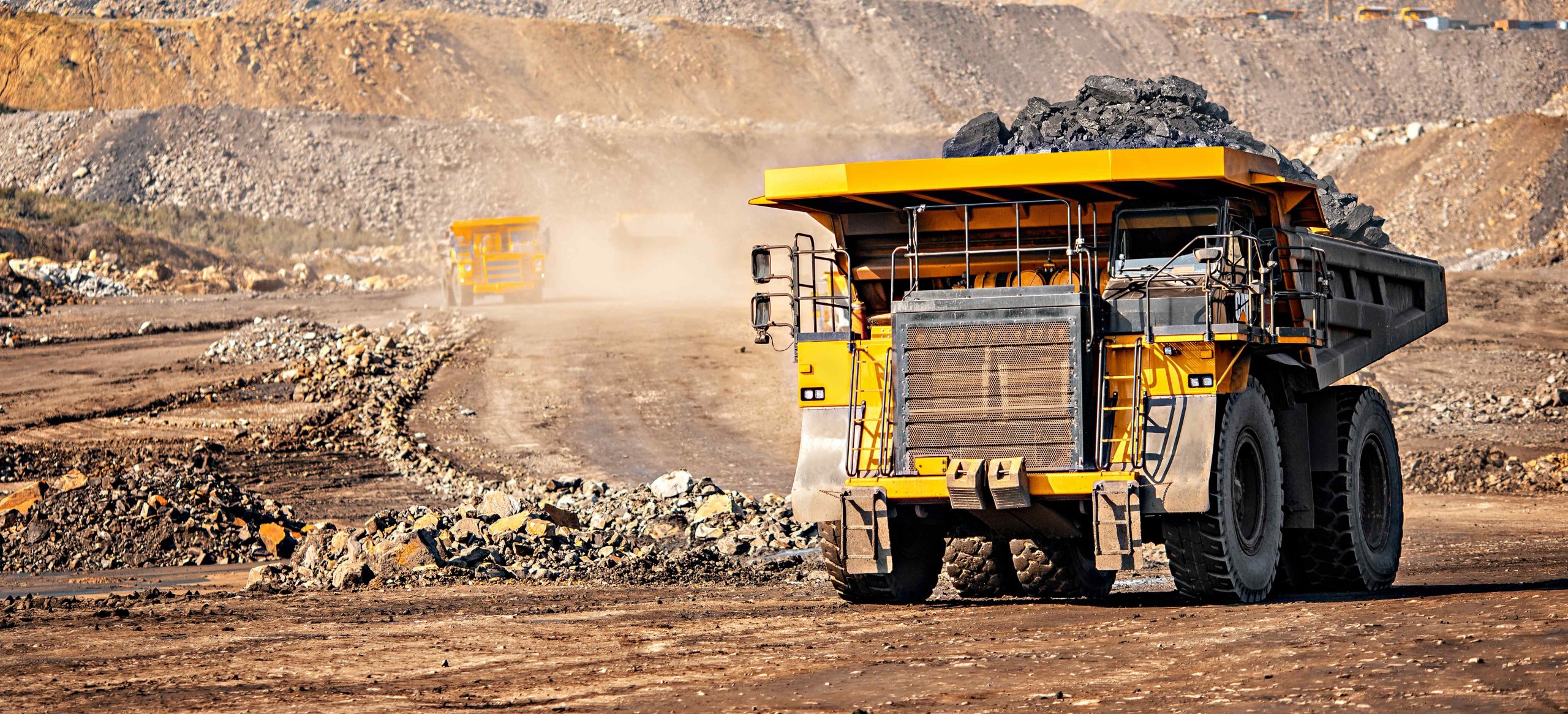
AMR: Continuing on with the concept of data science, how do you specifically leverage data to support mining companies?
DC: As mines are highly asset intensive operations, they need to deal with complex problems at scale, particularly when operating across multiple sites. As asset owners rely heavily on IoT to connect people, equipment and systems, this ultimately generates significant volumes of data generated from many different sources. Whether it’s communication and control networks, autonomous machinery, scanning technology, wearable devices or surveying drones, as new technologies are utilised, sophisticated digital infrastructure and maintenance strategies are first and foremost.
As part of the process, we work with clients to streamline their operational efficiencies. This obviously starts with the collection and organisation of datasets from equipment and various sources including sensors, logs and other records.
It’s then about conducting data analysis using data science tools, which allows us to process large amounts of data and identify patterns and trends. We also leverage machine learning and data science algorithms to learn from historical data, and utilise this for providing predictive insight into future equipment failures. By monitoring plant and other equipment onsite in real-time, data science can deliver actionable insights that can be used to improve equipment performance and processes.
Data insights play a critical role in the decision-making process as it helps mining companies make better decisions and recommendations about resource allocation based on historical data, environmental conditions, and other factors.
As Integrated digital technology is not just helping operators make faster and smarter decisions in all areas of their asset, it is also pushing them closer to achieving Environmental, Social, and Corporate Governance (ESG) goals and reducing their carbon footprint. Clean data forms an important foundation in supporting our clients on their journey towards net zero as it can be used as a tool to clearly define the roadmap. Our team works with clients to demonstrate where they have reduced their carbon footprint, and identify opportunities through data measurements on how they can achieve their net zero target. For example, reducing resources or reallocating them to more efficient areas across an asset where less travel is required, and preventing unnecessary breakdowns, which ultimately improve a company’s bottom line and environmental footprint.
AMR: What are some of the other services and capabilities that Crystalise offer clients when it comes to asset management?
PT: Ensuring asset integrity and compliance are dependent upon accurate and reliable data. We know that master data is the core information used by an organisation for analytics, reporting, and decision making. If the master data is inaccurate, the decisions made based on that data may also be inaccurate, which can lead to detrimental consequences.
Inaccurate or incomplete master data can lead to risks such as non-compliance, loss of revenue, and reputational damage. We mitigate these risks through a comprehensive audit of master data quality, reducing errors and maintaining integrity in our clients’ systems.
Improving operational efficiency relies on quality master data as it’s used by multiple departments and systems across an asset. If master data is of poor quality, it can lead to inefficiencies and duplicative efforts, which is why we leverage our specialist data auditing expertise to help clients improve their processes.
By auditing master data quality and delivering accurate and complete datasets, we establish greater levels of trust with all stakeholders involved, giving them peace of mining in the decision-making process moving forward. In more complex areas such as data migration and the transfer of asset-related information from one system or platform to another, trust and expertise cannot be overstated. This can include transferring data from legacy systems to newer systems, or moving data from one software platform to another.
At Crystalise, our primary focus for asset management is maintenance, reliability and efficiency. We understand the issues mining companies face, and stakeholder requirements, with data integrity being one of the major ones.
We work with clients to not only reconstruct their data, but we can also start from scratch and ensure all their data and systems are in line with 2023 standards right from the start, which is the approach we take in relation to new mines.
It’s our mission to set our clients up for success and we have the resources and expertise to maximise their data, keeping all stakeholders in mind when conducting data analysis and interpretation.
In the Crystalise team, we have all engineering disciplines covered including planning, master data scientists, and senior asset management practitioners and operational plant managers. As we strive for perfection in what we do, having this team of technical specialists under the same roof allows us to build robust, yet practical systems and processes for clients.
—————-
Crystalise
P: 1300 974 652
W: https://crystalise360.com.au/
Perth (HQ)
Level 8,
189 St George Street,
PERTH WA 6000
Brisbane
Level 1,
16 McDougall Street,
MILTON QLD 4064
Sydney
Suite 3, Level 5,
3 Rider Boulevard,
RHODES NSW 2138


